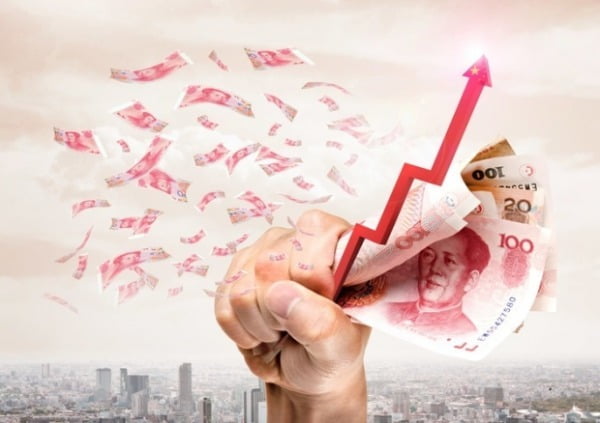
Photo = Getty Image Bank
Over 600 billion won in funding last month came to Chinese funds investing in Chinese stock markets such as Hong Kong and Shanghai. The yield also ranks at the top among major regional funds. At the beginning of the year, when the global stock market was adjusted, it is interpreted that the economy is rapidly recovering and funds are being driven to the Chinese market, which has good returns.
Popularity beyond style
According to F&Guide, a fund information company, as of the 4th, the amount set up for a public offering fund in China was 5,627.6 trillion won. It has increased by 6404 billion won over the past month. This is in contrast to the loss of 1.484.5 billion won from active equity funds in Korea during the same period.

The popularity of Chinese funds is of any type. Looking at the funds that have entered major Chinese funds over the past three months, Mirae Asset China Growth was 291.2 billion won and KB Mainland A stock was 276.9 billion won, accounting for 80.13% of the total inflow of Chinese funds (708.9 billion won).
Both funds invest in the Chinese market but have opposite portfolio orientations. If Mirae Asset China Growth is a fund centered on growth stocks listed in Hong Kong such as Tencent (6.86% of the portfolio) and Alibaba (4.11%), KB Mainland China A shares will be listed on mainland China stocks such as China Industrial Bank (6.96%) and Wanhua Chemical (5.81%). It mainly contains stocks related to traditional industries such as finance and manufacturing. Even considering preferences by industry or theme, the overall popularity of the Chinese market is said to be that high.
Investment funds ‘8% growth forecast’ to China
Behind the success of Chinese funds is the strength of the Chinese market. This year, major Chinese stock indices are performing at the top of the global stock market. Based on the closing price on the 4th, the Hong Kong H index rose 7.32% this year, outperforming the KOSPI index (up 4.85% during the same period) and the S&P 500 index (4.62%). Thanks to that, the average return of Chinese funds investing in these markets compared to the beginning of the year was 13.89%, ranking first among the seven overseas regions classified by F&Guide.
Although China is the first corona19 outbreak, it is expected to recover quickly and recover fastest this year among major economies. According to the International Monetary Fund (IMF), China’s economic growth rate (GDP growth rate) this year is 7.9%.
Experts are analyzing that the global economic recovery is slower than expected and the flow of funds to China, where stable growth is expected, is flowing. According to the International Finance Center, funds in the international financial market are also flowing into funds in emerging countries including China for three consecutive weeks. Seol-Hwa Choi, a researcher at Korea Investment & Securities, explained that “the Chinese market can expect both liquidity and earnings growth, as companies listed in mainland China are expected to see double-digit profit growth this year.”
Marketing also played a part
Marketing is also contributing to the popularity of Chinese funds. Bum Kwang-jin, Director of Retail Japan, KB Asset Management, said, “Korea and the US have a large valuation (share price-to-performance level) burden, and the investment trend has shifted from indirect investment to direct investment. It exists,” he said. “Sellers are also actively marketing Chinese funds as an alternative as sales of popular products such as private equity funds and stock price-linked securities (ELS) were sluggish in the past.”
However, the fact that the Chinese government is sending out monetary tightening signals is considered a factor of insecurity. This is because both the stock market surge after Corona 19 and the economic recovery that was the basis for it are all leaning on the government’s proliferating monetary and fiscal policy. The People’s Bank of China, the central bank of China, started to reduce market liquidity this month by raising the interest rate of short-term funds it provides to the financial sector. The stock market was also affected. Since the end of January, when the liquidity contraction began, the Shanghai Composite Index has been adjusted around 3% and returned some of the gains at the beginning of the year. Researcher Choi said, “While the recent tightening is not at the level of damaging economic fundamentals such as corporate performance, we need to be wary of some high-value industries that have a large decline.”
Reporter Jeon Beomjin [email protected]
